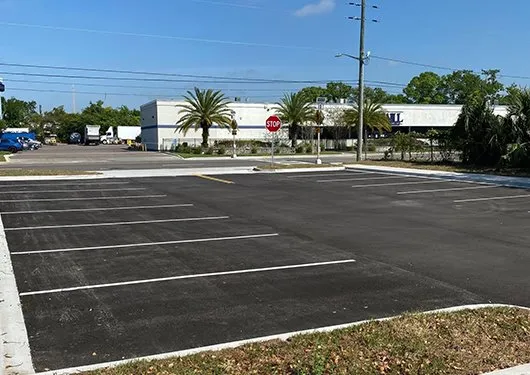High-traffic areas such as airports, malls, and stadiums necessitate specialized striping techniques to ensure efficient crowd management, enhance safety, and optimize navigational ease. The vast influx of people in these environments requires clearly marked paths and zones to guide pedestrian and vehicular traffic, minimize congestion, and prevent accidents. In airports, the precision of striping is paramount. Runway and taxiway markings must adhere to strict international standards to ensure the safe takeoff, landing, and movement of aircraft. These markings are typically made using highly durable, reflective materials that withstand harsh weather conditions and heavy wear. The use of high-visibility colors, such as white, yellow, and red, is crucial for clear visibility both day and night. Additionally, passenger areas within the airport, such as terminals and boarding gates, benefit from floor striping to direct foot traffic, indicate waiting areas, and demarcate emergency exits.

Striping in parking lots is essential to guide drivers to parking spaces, define pedestrian crosswalks, and indicate handicapped and family parking zones. Inside the mall, striping helps delineate walkways, queue lines, and emergency routes. The use of aesthetically pleasing yet functional designs can enhance the overall shopping experience, making navigation intuitive and reducing the likelihood of accidents. For instance, color-coded zones can assist shoppers in locating specific areas or stores within the mall, thereby improving operational efficiency and customer satisfaction. The materials used for striping in malls often prioritize both durability and visual appeal, with options like epoxy-based paints providing long-lasting results while maintaining a polished look. Stadiums present a unique challenge due to the high volume of people in confined spaces, especially during events. Effective striping is critical in parking areas to manage the influx and egress of vehicles, ensuring smooth traffic flow and maximizing the use of available space. Within the stadium, striping plays a crucial role in guiding spectators to their seats, marking aisles and exits, and delineating zones for staff and security personnel. The use of vibrant colors and reflective materials is essential for maintaining visibility in various lighting conditions, from daylight to the artificial lighting of night events.
Moreover, temporary striping solutions may be employed for specific events to adapt to changing needs and configurations, providing flexibility while maintaining order and safety. In all these environments, the choice of materials and techniques for striping is influenced by the specific demands of the area. High-durability paints, thermoplastic markings, and preformed tapes are commonly used due to their resilience and visibility. The application methods, such as airless spraying or manual application, are selected based on the scale and intricacy of the striping required. Regular maintenance and re-striping are essential to ensure markings remain clear and effective over time, addressing wear and tear from constant use. In conclusion, specialized asphalt paving striping techniques are vital in managing the complex dynamics of high-traffic areas like airports, malls, and stadiums. These techniques not only enhance safety and efficiency but also contribute to a positive user experience by providing clear guidance and organization. The integration of durable materials, high-visibility colors, and strategic design ensures that these spaces can handle large volumes of traffic effectively while maintaining order and functionality.